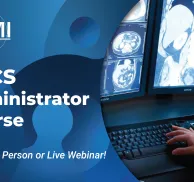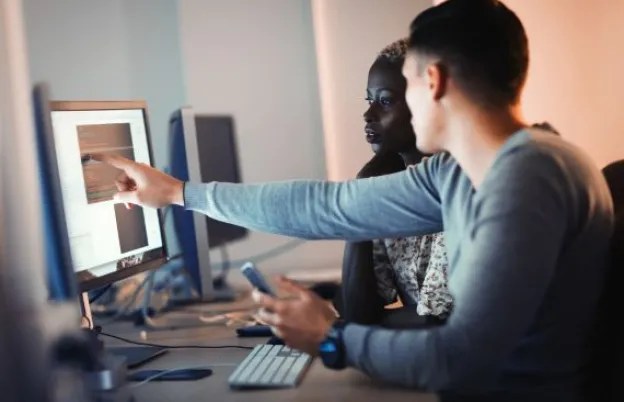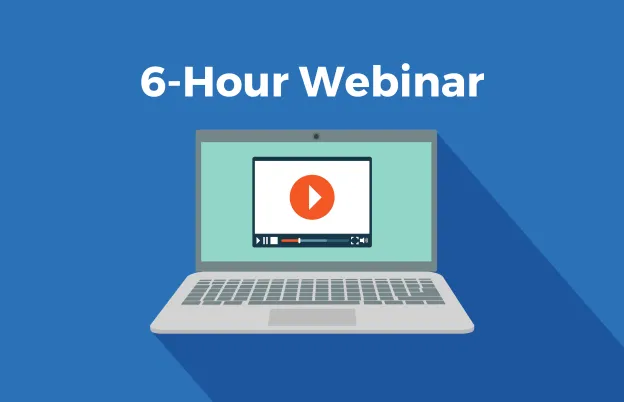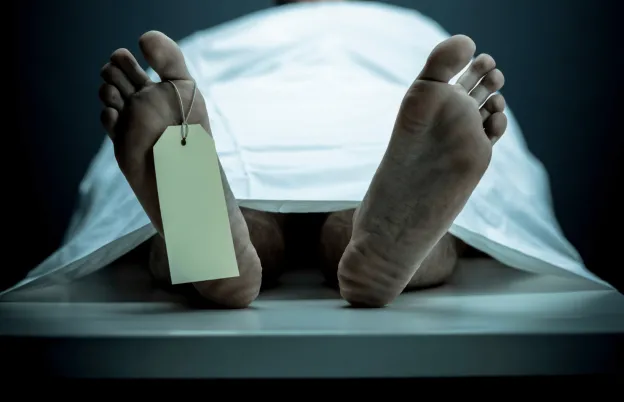
Shielding in Radiology
About this Program
Medical uses of radiation have grown rapidly over the past two decades, and it remains the largest source of manmade ionizing radiation exposure to the U.S. population. Additionally, non-ionizing radiation from Magnetic Resonance Imaging (MRI) also presents unique hazards. Engineering controls from properly designed and installed safety barriers (radiation shielding) are among the most effective strategies for protecting individuals from the hazards unique to Radiology. MRI safety is imperative. Therefore, understanding the design and evaluation of shields for radioactive sources, x-ray-producing equipment, and MRI systems—issues covered in effective radiation safety training courses—is essential for maintaining a safe imaging environment.
This 4-part rad safety training webinar provides an in-depth look at shielding common Radiology modalities, including radiography, mammography, fluoroscopy, CT, MRI, Nuclear Medicine, SPECT/CT, PET/CT, and Radiopharmaceutical Therapy. Plus, our radiation safety course is designed to provide continuing education for potential CAMPEP credits.
The instructors who lead our webinars, including these radiation safety training sessions, are true professionals with years of experience in their fields. They are ready, willing, and able to share their radiation shielding expertise with you.
Educational Objectives
At the completion of this online training webinar in radiation shielding, participants will be able to:
Session 1 – Ionizing Radiation Shielding Basics
- Understand important shielding concepts, including permitted dose, workload, occupancy factor, use factor, barrier transmission factor, tenth-value and half-value layer, and attenuation of typical building materials
- Distinguish the difference between primary and secondary X-ray radiation
- Describe the general approach for determining radiation shielding using the graphical method, as well as the Archer equation
- Understand the issues concerning radiation personal protective equipment for workers and patients
- Understand the shielding considerations relevant to dental radiography facilities, and perform sample calculations described in NRCP report 177
Session 2 – Radiography, Fluoroscopy, Mammography and CT
- Understand the shielding considerations relevant to mobile and fixed radiography, and perform sample calculations described in NCRP report 147
- Understand the shielding considerations relevant to mobile and fixed fluoroscopy, and perform sample calculations described in NCRP report 147
- Understand the shielding considerations relevant to mammography, and perform sample calculations described in NCRP report 147
- Understand the shielding considerations relevant to computed tomography, and perform sample calculations described in NCRP report 147
Session 3 – Nuclear Medicine and Radiopharmaceutical Therapy
- Describe the relevance of source terms for radionuclides, per-year and per-hour dose limits, as well as shielding for sealed sources, instruments, and radioactive waste
- Describe the general radiation protection requirements in Nuclear Medicine facilities, including access control, contamination control, bathrooms, area radiation monitors, and ventilation
- Understand the considerations for determining radiation shielding for uptake and administration suites, as well as in-patient radiopharmaceutical therapy suites, and perform sample calculations
Session 4 – SPECT/CT, PET/CT and MRI
- Understand the considerations for determining shielding for SPECT/CT suites, and perform sample calculations
- Understand the considerations for determining shielding for PET/CT suites, and perform sample calculations
- Describe the general considerations for magnetic resonance imaging, including the MR-Safety Zone concept, static magnetic field shielding, radiofrequency shielding, and acoustic/mechanical shielding
~ AAPM endorses the educational component of this program. ~
It does not, however, endorse any
product used or referred to in the program.
Schedule
What this course will cover
In this MRI safety webinar, we pack everything you need to upgrade your MRI safety and radiation shielding skills in just four online training sessions.
Session 1 – X-Ray Producing Equipment in the Diagnostic Energy Range
Ionizing Radiation Shielding Basics
- Common Sources of X-Ray Dose from Medical Imaging
- Permitted Dose
- Barrier Transmission Factor
- Occupancy Factor
- Primary Radiation
- Use Factor
- Workload
- Secondary Radiation
- Scatter
- Leakage
- The Archer Equation
- Common Shielding Materials
Session 2 – X-Ray Producing Equipment in the Diagnostic Energy Range
Radiography, Fluoroscopy, Mammography, and CT
- Review of Session 1
- Holistic View of Shielding Design and Evaluation
- Examples
- Radiography – mobile
- Radiography – fixed
- Mammography
- Fluoroscopy – mobile
- Fluoroscopy – interventional (fixed)
- Dental – intra-oral
- Dental – Panoramic and CBCT systems
- Computed Tomography
- Recap of Shielding for X-Ray Producing Equipment in the Diagnostic Energy Range
Session 3 – Nuclear Medicine and Radiopharmaceutical Therapy
Nuclear Medicine and Radiopharmaceutical Therapy
- Holistic view of Shielding Design and Evaluation
- General Requirements
- Dose in one hour
- Dose in one year
- Source terms for radionuclides
- Dose/Exposure Rate Constants
- Temporal and Spatial Dependence of Protection Points
- Radiopharmaceutical Therapy Shielding
- In-patient suites
- Out-patient suites
- Other relevant considerations
- General Considerations
- RAM Waste
- Patient Dosages
- Phantoms and Sources
- Shielding Devices (e.g. Generators)
- Shielding Equipment (e.g. Uptake Probe and Well
Counter) - Flooring
- Shine
Session 4 – SPECT-CT, PET-CT, and MRI
- Recap of Session 3
- Method for combining CT and RAM Shielding
- PECT-CT Shielding
- PET-CT Shielding
- Nuclear Medicine Department Shielding Design and Evaluation
- MRI Shielding
- Radiofrequency Shielding
- Static Magnetic Field Shielding
- MRI Zones, Anchors/Tethers
- Acoustic/Vibrational Shielding
- ELF Shielding
- Radiology Department Shielding Design and Evaluation – Holistic Approach
- Controlled Access
- Public and Patient Areas
- X-Ray Areas
- RAM Areas
- MRI Area
Audience
Who should attend?
This radiation protection course webinar is for anyone wanting to understand the safety regulations involved in radiology, especially for medical physicists wanting to expand their knowledge on diagnostic and nuclear medicine radiation shielding. This rad safety training is also appropriate for medical physics students, residents, fellows, technologists, and biomedical engineers.
Program Faculty
Meet your presenter(s)
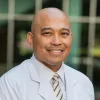
Max Amurao
PhD, MBA, DABR(D,N), MRSE, CMLSO
Max Amurao has been in the Medical Physics and Radiation/Magnet/Laser Safety field for over 20 years. In addition to being heavily involved in Medical Physics education, his clinical practice encompasses Diagnostic Medical Physics, Nuclear Medical Physics, Therapeutic Medical Physics, Radiation and MRI Safety, as well as Laser Safety.
He is a certified Diagnostic Medical Physicist (DABR), Nuclear Medical Physicist (DABR), Medical Laser Safety Officer (CMLSO), Magnetic Resonance Safety Officer (MRSO), Magnetic Resonance Safety Expert (MRSE), and a Health and Safety Professional (CHSP).
Max is based in South Florida and serves as the Executive Director of the Radiation Control program for the University of Miami, University of Miami Health System, and Jackson Health System.
Credits
Accredited training programs
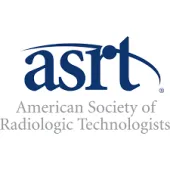
ASRT Category A Credit
This bundle provides 2.25 (per session) hour(s) of Category A continuing education credit for radiologic technologists approved by ASRT and recognized by the ARRT® and various licensure states. Category A credit is also recognized for CE credit in Canada. Upon completing each program within the bundle, you will receive a certificate of completion.
CAMPEP pending
This program is designed to provide 2 (per session) hours of continuing education. The program has been submitted for approval by CAMPEP for Medical Physics Continuing Education Credit (MPCEC) for qualified medical physicists.
Tuition

| Audience | Price | Early Price | Member Price | Member Early Price |
|---|---|---|---|---|
| Physicist | $65.00 | $60.00 | $55.00 | $50.00 |
| Technologist | $55.00 | $50.00 | $45.00 | $40.00 |
At MTMI, we believe in helping others provide quality care for every patient. We also believe in making high-quality training accessible for every healthcare professional in need of continuing education credits and skill upgrades.
Early Pricing Guidelines
Qualifying 'Early' registrations must be made at least 4 days in advance for the program.
Cancellation Policy
Webinars less than 8 hours of credit
Refunds, minus a $15 processing fee, will be granted for cancellations received at least 3 days prior to the program. Cancellations received within 3 days of the webinar will receive a credit toward a future MTMI program, minus the $15 processing fee. No refunds will be made after the webinar starts. MTMI reserves the right to cancel any scheduled program because of low advance registration or other reasons. MTMI’s liability is limited to a refund of any program tuition paid. WEBINAR ATTENDEES that cannot log in due to unsolvable technical issues beyond their control will be eligible for a full refund.

